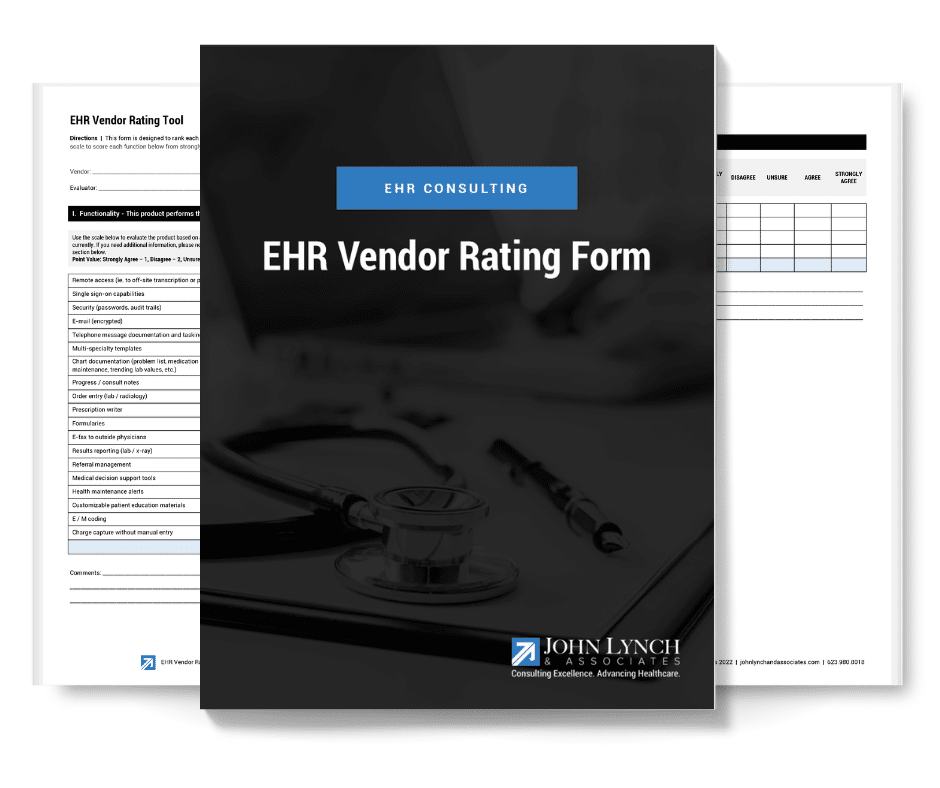EHR Vendor Rating Form
A clear, objective way to compare EHR vendors.
Selecting the right EHR system is one of the most impactful decisions your organization will make. Whether you’re opening a new facility, replacing an existing platform, or optimizing your clinical workflows, each vendor will present compelling features and promises.
However, without a structured evaluation process, it’s easy to overlook critical operational, financial, and compliance considerations. The EHR Vendor Rating Form provides a standardized, unbiased way to score each vendor across the same core categories so you can make a confident, well-supported decision.
What this EHR vendor rating form includes.
This form provides a clear framework to evaluate each EHR vendor consistently across key selection criteria. It helps you stay focused during vendor demos and ensures your decision is based on objective comparisons not sales presentations. This form includes evaluation fields for:
- Clinical usability & workflow alignment
- Scheduling, billing, and reporting functionality
- Compliance and security safeguards
- Training, implementation, and support approach
- Total cost transparency and contract considerations
- Overall performance score and vendor comparison summary
What you will gain.
- Confidence in selecting an EHR that fits your organization’s real-world needs
- Clear visibility into how each vendor performs, side-by-side
- A structured process to support stakeholder alignment and leadership approval
- Reduced risk of costly re-selection or workflow disruption down the line
This tool ensures your final EHR choice is both strategic and evidence-based.

Need guidance evaluating EHR systems or preparing for vendor demos?
Our EHR consultants help organizations navigate vendor selection, implementation readiness, and system optimization with hands-on support every step of the way.
